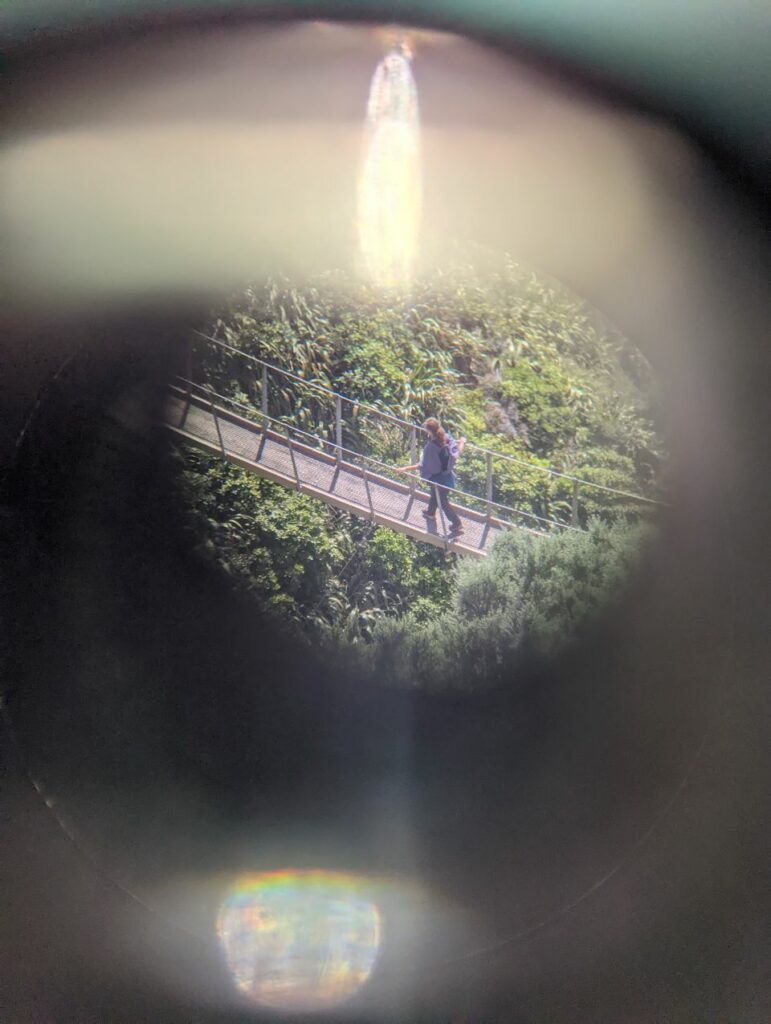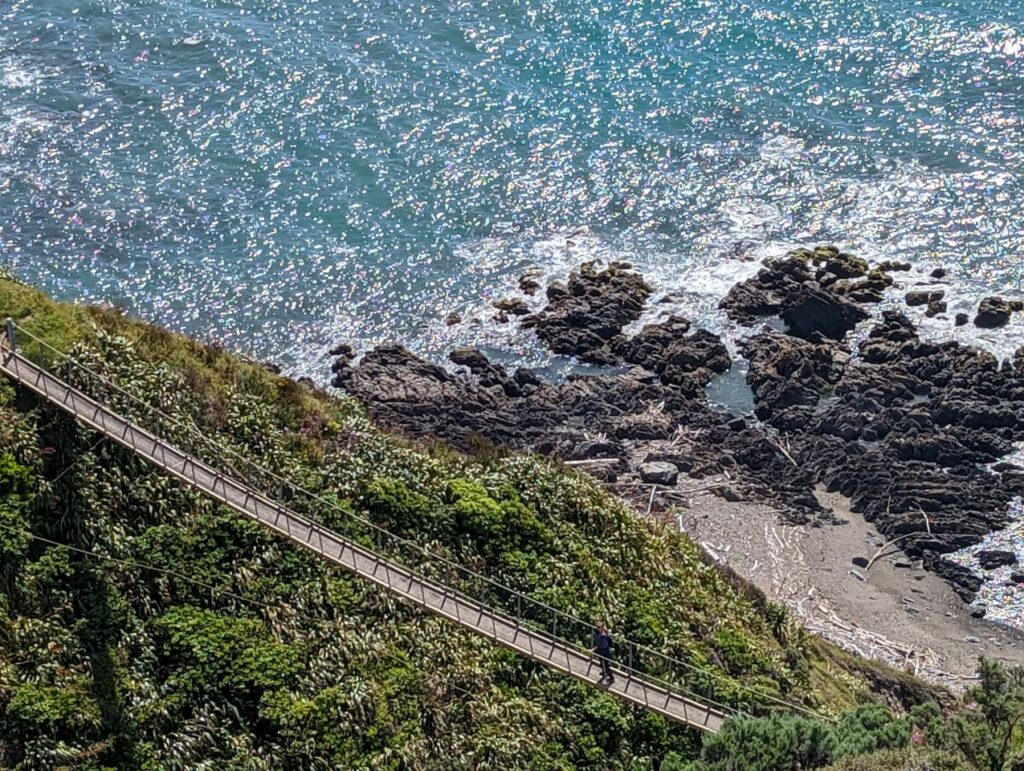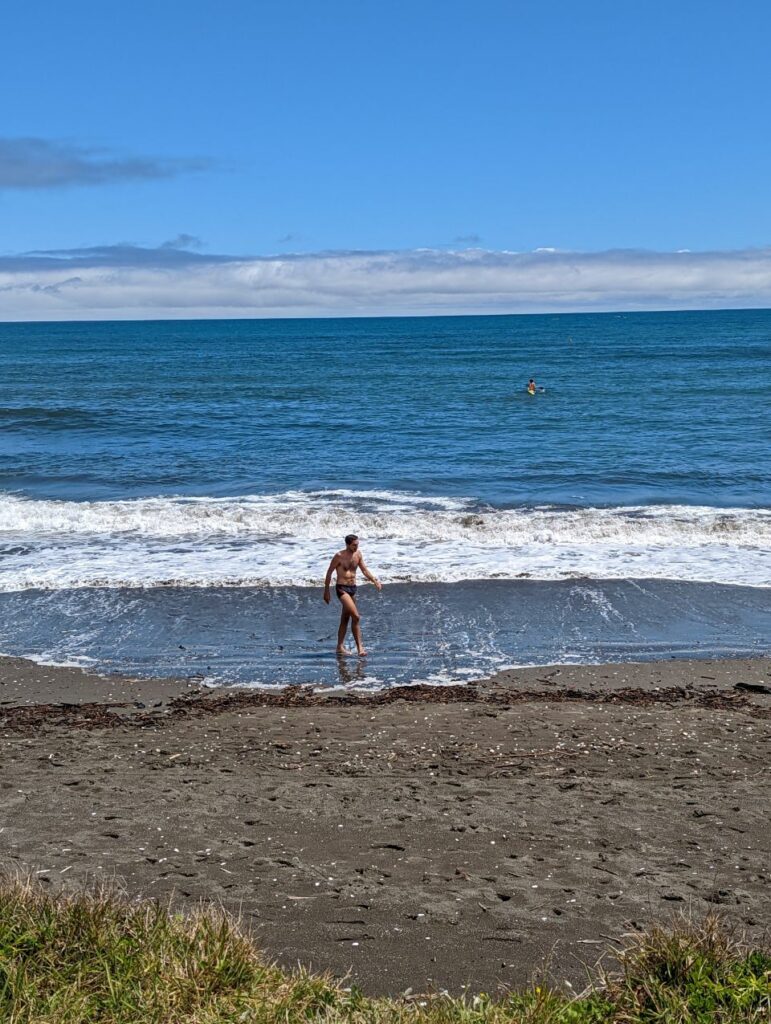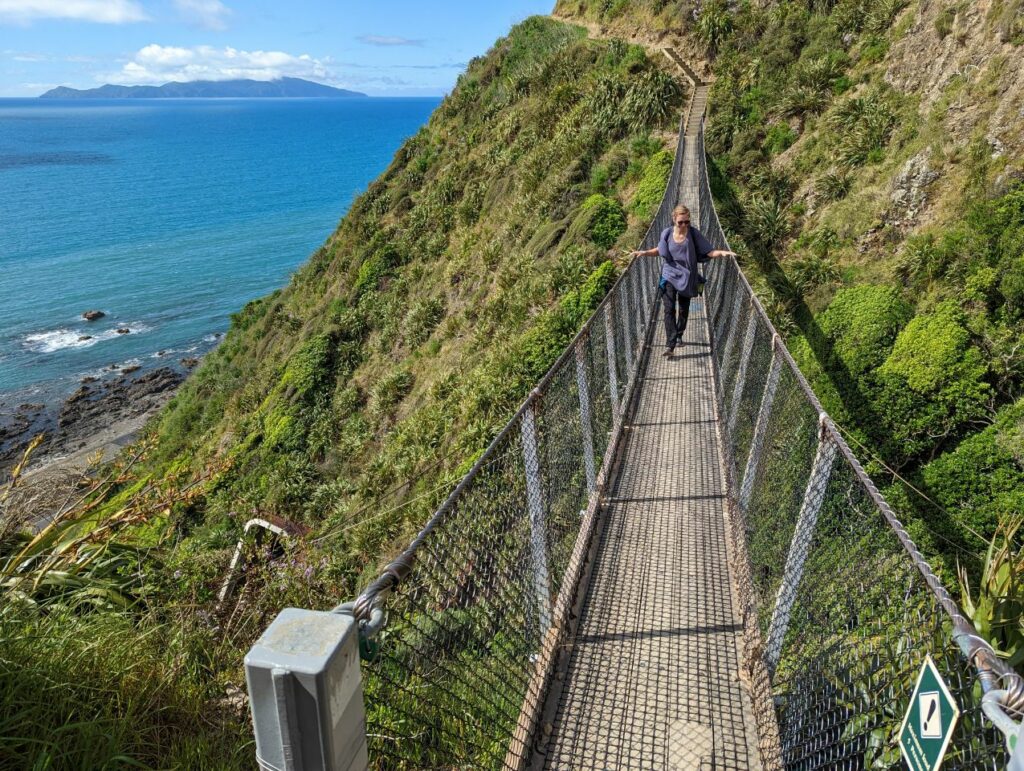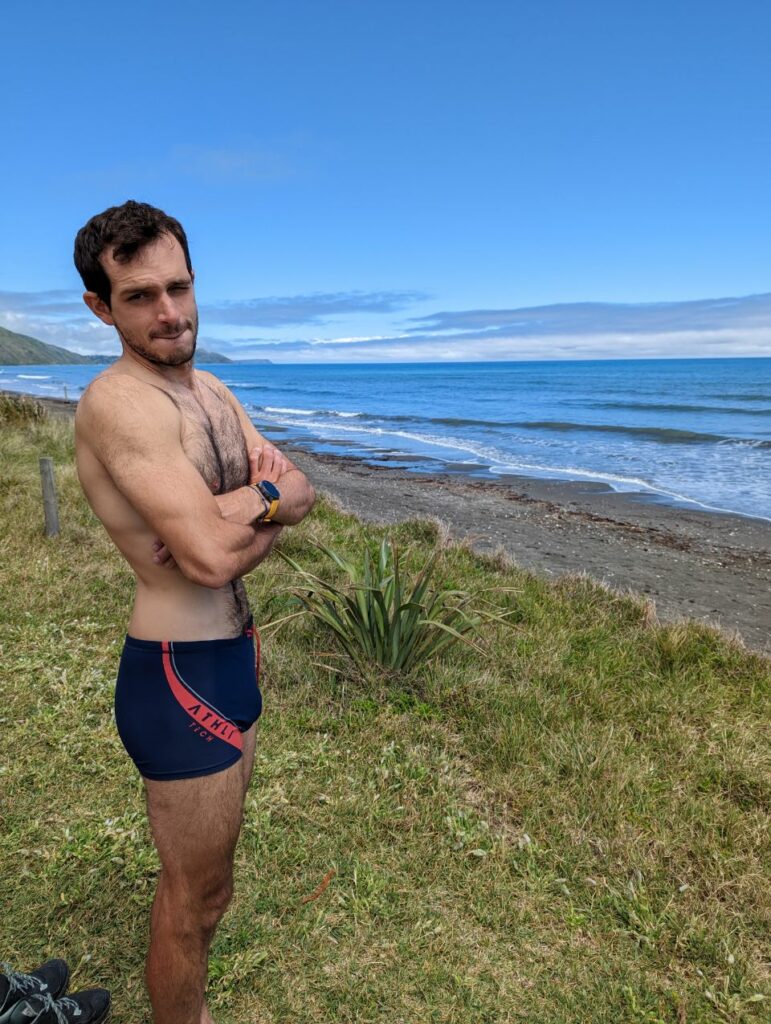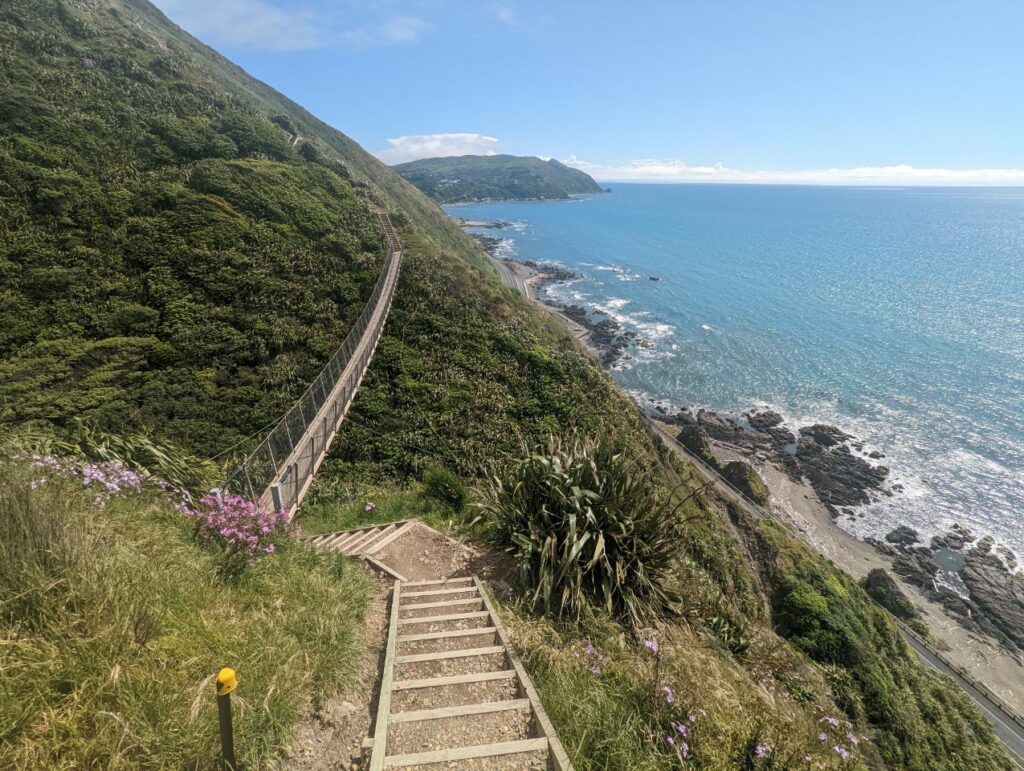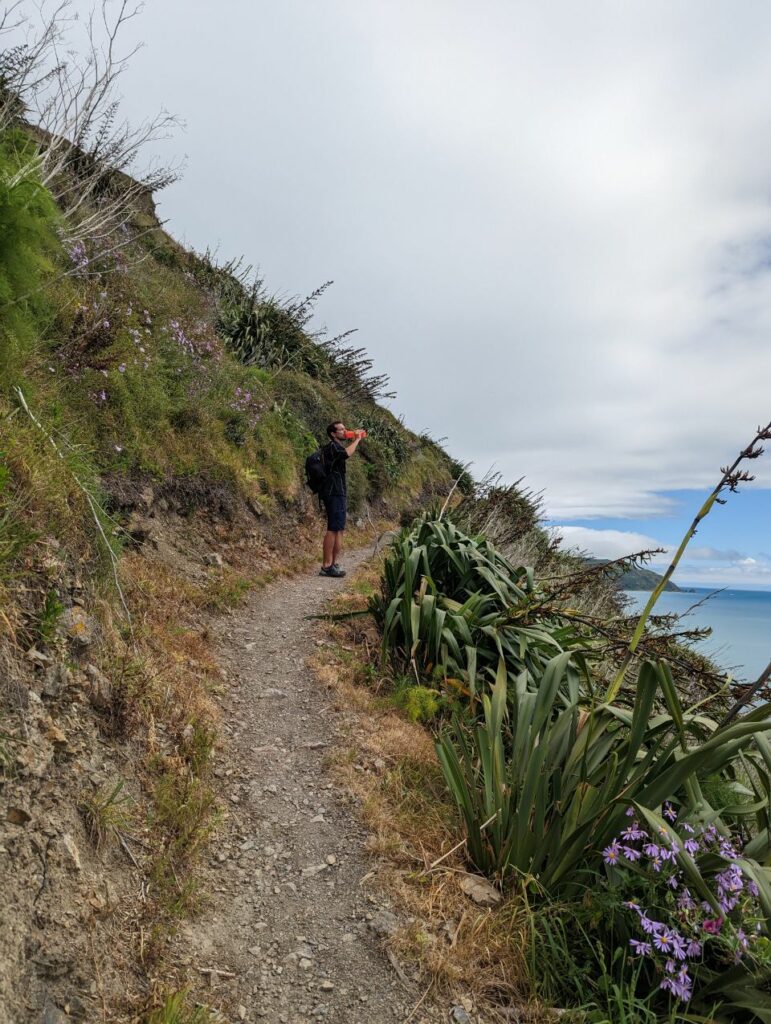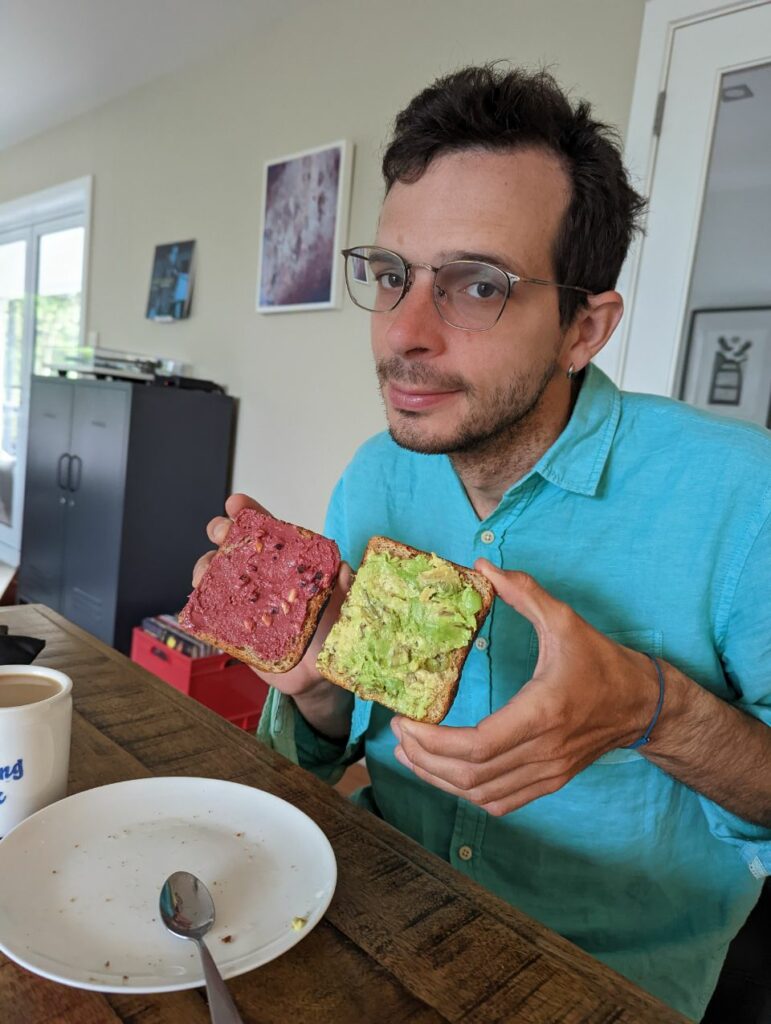Matinée jardinage chez nos hôtes
Puus on est allé à l’entraînement du life guard dune des filles
Première baignade dans l’océan aujourd’hui avant de faire une bonne randonnée de 10 km ( assez vertigineuse pour ma part ^^)
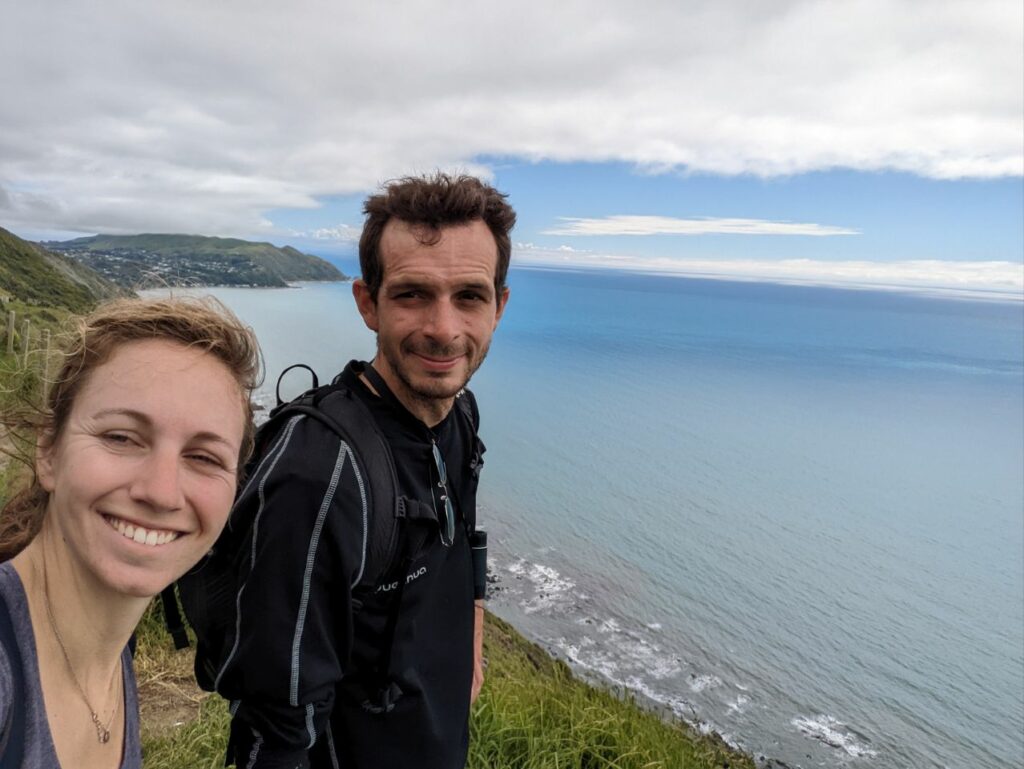
PAEKAKARIKI
12th November 2022
Paekākāriki (/ˌpaɪkɑːkɑːˈriːki/) is a town in the Kapiti Coast District in the south-western North Island, New Zealand, and one of the northernmost suburbs of Wellington.[3] It lies 22 km (14 mi) north of Porirua and 45 km (28 mi) northeast of the Wellington CBD. The town’s name comes from the Māori language and can mean « parakeet perch ».[4] Paekākāriki had a population of 1,665 at the time of the 2013 census, up 66 from the 2006 census.[5]
Paekākāriki lies on a narrowing of the thin coastal plain between the Tasman Sea and the Akatarawa Ranges (a spur of the Tararua Ranges), and thus serves as an important transportation node. To the south, State Highway 59 climbs towards Porirua; to the north the plains extend inland from the Kapiti Coast; at Paekākāriki the highway and North Island Main Trunk railway run close together between the coast and hills. Paekākāriki is also served by the nearby Transmission Gully and Kapiti Expressway (both part of State Highway 1).
History
Prior to European settlement, the area was contested by Māori groups including Rangitāne and Muaūpoko.[11] During the 1820s the great war leader Te Rauparaha defeated and expelled the earlier inhabitants and claimed the region for Ngāti Toa and their allies. Ngāti Haumia, a hapū of Ngāti Toa, built their pa by the mouth of the Wainui steam at the northern end of Paekākāriki.[11] Te Rauparaha, whose pa was on nearby Kapiti Island, died in 1849, the same year that a road connecting Paekākāriki with Porirua was completed. In 1850 the New Zealand Government resettled Wainui’s inhabitants and merged their pa with the new settlement of Paekākāriki.[11]
Paekākāriki’s history has been intimately linked with the railway, and there is a museum at the Paekākāriki railway station commemorating this heritage. In 1886 the Wellington and Manawatu Railway Company‘s line from Wellington to Longburn was completed, and Paekākāriki became an important stop on the journey. In 1908, the line was incorporated into the national network of the New Zealand Railways Department and became part of the North Island Main Trunk linking Wellington and Auckland, the North Island’s most important line. In 1917, NZR withdrew dining cars from its passenger trains due to World War I economic difficulties and Paekākāriki became a main refreshment stop on the trip north; originally a temporary measure, the dining cars did not return for decades and Paekākāriki’s status remained until the 1960s.
From 1940 the line south to Wellington through the new Tawa Flat deviation was electrified and at Paekakariki engines were changed, with a steam engine depot at Paekakariki. Electrified commuter services were also extended to Paekakariki. The locomotive depot gradually declined in importance due to changing motive power, and nowadays only FP/FT « Matangi » class electric multiple units are stabled here. The old steam locomotive depot is now the location of « The Engine Shed », the base of Steam Incorporated, one of New Zealand’s premier railway preservation societies. The Paekakariki Station Precinct Trust has been established to manage the station area, including the museum and Steam Incorporated’s depot, and firmly establish it as a historical and tourist attraction.
During the Second World War Paekākāriki served as a major base for US Marines fighting in the Pacific Campaign. There were three main camps, all situated in or adjacent to present-day Queen Elizabeth Park. At the height of the occupation there were over 20,000 Americans stationed in the region, significantly outnumbering locals. The camps were used for training purposes, as well as rest and recreation for those returning from the Pacific combat zone. Paekākāriki’s steep surrounding hills proved suitable terrain for marching and mortar practice, whilst its beaches were used to stage amphibian invasions. They were the scene of an unfortunate tragedy in June 1943 when a landing craft was swamped by a wave during a nighttime training exercise. Nine men drowned in the heavy surf according to official figures; local rumour put the toll higher. The incident was not reported at the time due to wartime censorship provisions.[12][13]
While the American base in Paekākāriki was only in existence for a few years it had an important and lingering impact on the region.[14] Several local place names remain as reminders of this wartime presence. Tarawa Street, for example, commemorates one of the bloodiest battles of the Pacific War which locally based marines fought in directly after the camps were abandoned in October 1943.

